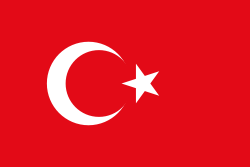Understanding LNG Terminals & Terminal Operations
التذاكر
Understanding LNG Terminals & Terminal Operations
Understanding LNG Terminals & Terminal Operations

What are the Goals?
The achievable for the training course will include:
- Improving your LNG terminal handling, loading and discharging of bulk liquids
- Learning about LNG SIMOPS and LNG international guidelines and regulations concerning tankers and terminals including the science of LNG, new technologies, properties and types of cargoes transfers now available
- Understanding the techniques used globally regarding LNG Quality & Quantity
- Becoming familiar with state of the art LNG loading and discharge operations and equipment
Who is this Training Course for?
- LNG suppliers, traders and distributors
- Ship owners and operators
- Superintendents and safety officers
- Technical and operations executives
- Charterers and traders
- Ship brokers
- Port and terminal operators
- P&I club and marine insurance
- Ship Owners and Managers
- Offshore Vessel and FPSO Owners and Operators
- Oil Majors, NOCs and Independents
- Ship Superintendents and Safety Officers
- Ship Officers and Crews (Master, Chief Officers, Chief Engineers etc)
- Loading and Mooring Masters
- STS Service Providers
- Liquid Cargo and Bunker Surveyors
- Ports and Terminal Operators
- P&I Inspectors and Executives
- LNG FSU Owners, Managers, Operators
Daily Agenda
Day One: Regulations, Standards and Guidelines Governing Transfer Operations
- MARPOL Annex 1, Section 8 about Oil Tanker/ LNGC
- Latest on transfer Guides for Crude, Products and Liquid Gasses
- International Safety Guide for Oil Tankers and Terminals (ISGOTT)
- Oil Companies International marine Forum (OCIMF) Guidelines
- LNG Vessel operations in port guidance
- LNG Bunkering guidelines (SGMF)
Parties involved and their Relationship to One Another
- How Parties involved (Oil/Gas Majors, Charterers, Service Provider, Cargo Surveyors, FSRU operators, POAC, Ships’ masters and Mooring Master) work harmoniously to attain operational efficiency and safety
- LNG/FSRU Ship Management and receiving terminal
Person in Overall Advisory Control
- Qualifications and Training of POAC
- POAC performing different roles at particular point of the operations
Day Two: Pre-planning and Risk Assessment Considerations
- What is LNG? Hazards and Risks vs. Oil
- Screening / Compatibility Studies of participating vessels
- Ship compatibility, and OPTIMOOR
- Criteria in selecting transfer area and Approval from the authorities
- Security issues
- Checklists and Preparations
- Risk Assessments and Management, Helicopter operations, Cargo Hazards, weather conditions, personnel injury, mooring unmooring operations
- Oil v/s LNG any differences?
Planning and Equipment
- Plan format and information to include
- Joint operations plan
- Who prepares the plan?
- Supply of equipment, fenders, hoses
- Equipment and Locations
- ISM and Training requirements – Timelines for Compatibility
Plan and Review - Exercise
- Plan review and discuss checklists and equipment items required
- Confirm any training requirements
- Simulation training and bridge team resources management
Types of Custody Transfer Measurement [Quality and Quantity]
- LNG - Systems and Equipment
- Liquid form measurement
- Volumetric measurement
- Temperature measurement
- Custody Transfer Measurement systems
- Dynamic Metering
- Ultrasonic Metering
- Vortex Metering
- Colirious Metering
- (CTMs) testing and checks
- LNG Custody Transfer Procedure
Mooring Operations Manoeuvring and Risks
- Underway and Anchored operations and cast-off ops
- Navigation signals/weather parameters
- Tug and Tender assistance
- Carriage and Delivery of Fenders and Equipment
- Communications
- Mooring operations, weather limitations for operations
Day Three: Cargo Transfer Operations
- Introduction to LNG vessel types
- Personnel transfer
- Pre-Cargo Transfer meeting
- Checklist and communications confirmation
- Custody Transfer measurement
- Emergency Shut Down tests, Shore ESD 2 and STS ESD 2 difference
- Cargo operations and monitoring
- Differences for operations between oil and LNG
CASE STUDY - Compatibility study and meeting
- OPTIMOOR studies
- Simulator training for FSRU and STS equipment
- Cargo discharge considerations LNG Cargo Unloading arms discharge HP to Shore
Best Practices Oil and LNG comparisons
- Discuss main considerations
- Best practice any real differences between oil and gas?
Emergency Response and Contingency Planning
- Things to do in case of emergency
- General Emergency Response Management
- Things to avoid during emergencies
- Contingency equipment
- Oil spill and LNG leak
- SOPEP/SIMOPS use
- Fire or Structural damage
- Poor weather and mooring failures
- Precautions against piracy
- Media management and communications, parties involved
CASE STUDY - Spill Response during Cargo Transfer Operations
- Immediate response and notifications
- Effects and consequences of the spill
- Contingency considerations after spill
Terminal and Offshore Safety Inspections – Offshore and Terminal Installation Management Safety [OIM]
Day Four: Electrical Isolations, Terminal Fixtures and Equipment and Fuels
- Fire and Fire Science – Terminal Safety
- Terminal and Offshore Inspections – Electrical, Fixtures, Fuels
- MDS – Material data Sheet Chemical Sources and ignition
- Mechanical Energy – Liquid and Gas Safety
Vessel Design, Technology and Operations
- Fuel systems for LNG powered Vessels
- Measures to reduce energy consumption in ship applications
- Cut operating costs while, at the same time, reducing emissions
- Ship design efficiencies
- Technological efficiencies to reduce energy Consumption in all ship application
Failures Investigation and Root Cause Analysis - Case Study & Delegate Exercise – Terminal Failure Diagnosis, Analysis and Prevention and Planning
New Terminal and Bunkering developments for Marine Engineers and Tech Superintendents – Wear down, Fatigue and Failure Management Practices and planning - LNG Fuel, STS and Bunkering
- Overview of SMS & PMS
- Discuss onboard planned maintenance systems – PMS
- Discuss Trend analysis – T.A
- Analysis of Condition monitoring technical - CME
- OEM Main Engine component failures relevant to engine performance
Commercial aspects of General Average Insurance and LNG Cargo Incidents and Claims - how it affects all participants in the STS Shipping Industry
- What is G.A – why does it affect all participants commercially?
- A - Carriers concerns
- LNG Loss and Case Studies
- LNGC Cost of Losses and how to minimise commercial and economic risks
- LNG Calculations and how to minimise loss
- A - Charterer concerns
- A – Facilities and Operators concerns
- A – STS, Bunker Handlers & Bunker Operators concerns
- Commercial Contracts and the effects on all parties
- Technical nature of G.A
- Rights and Obligations of all participants in the event of G.A
Day Five: Terminal SIMOPS Training – Simultaneous Operations (LNG Transfers and Operations)
- Considerations when performing SIMOPS
- HAZARD and Risk when performing LNG SIMOPS
- Ship to Ship operations
- 24 Hr LNG operations
- Where do SIMOPS operations occur?
- Why are SIMOPS performed?
Terminal Safety and Planning
- SWP/JSA Delegate Exercise - HSE Health and Safety Workplace Practices SWP/JSA for end to end Bunkering
- Bunkering Safety and Risk Management
- Risk Analysis and Job Safety Analysis – OBJECTIVES
- Technical characteristics of LNG
- Handling, storage and spill risk
- Volatile cargo and gas vapors leak from ruptured tanks, Hoses and pipelines, causing oxygen deficiencies
- Gas Hazard Monitoring Equipment for JSA
- Adverse Weather Working – Guidelines examples for JSA
- Approach to Installations
- Hose construction and length
- Hose quality and identification
- The ‘Golden’ Safety Rules - Port and Vessel Operations
- Confined space entry
- Process and Mechanical isolations
- Electrical isolation
- Working at Height
- Ground disturbances
- Lifting Operations
- Driving Safety
- Management of Change in Organization, Equipment, Plant, Standards or Procedures that have a Health, Safety, Integrity and/or Environmental impact
- ‘Step back’ 5 x 5 procedures
Offshore and Terminal Liquid transfers
- In Service Inspections
- Service Leak Testing
- Hose Ops and Vessels Procedures
- COLOUR COUPLINGS INDEXES
- Operational risk profiles
- Inspections and Audit – Rigging
- Inspections and Audit – Wire Ropes
- Inspections – Handling and Chains
- Inspection - Shackles and hardware
Terminal/Cargo and Port State Control [PSC]
- Survey and Inspection requirements
- Vessel particulars
- Documentary certificates
- Condition of vessels hull and machinery
- Defects and efficiency
- PSC Structural condition surveys
- Condition survey requirements
- Special instructions and requirements
Terminal Cargo Interface and Ship Construction designs parameters
- Ship Naval architecture and design for terminal interface
- Cargo and Forces
- Centre of gravity
- Movement and stability during cargo loading and unloading
- SMS/IMO and Equipment
- Ship motions and vibrations during cargo discharge
- Intact stability analysis
- Damage and stability analysis
- Degrees of freedom during cargo operations
- Systems and monitoring
التذاكر
دورات ذات صلة
Mechanical Equipment: Compressors, Pumps, Seals, Motors & Variable-Speed Drives

Crude Oil Treatment

Advanced Lubricant & Additive Manufacturing

Advanced Lubricant & Additive Manufacturing

AI-Driven Predictive Maintenance for Gas Processing Facilities

AI-Driven Predictive Maintenance for Gas Processing Facilities

Deepwater & Ultra-Deepwater Field Operations

Deepwater & Ultra-Deepwater Field Operations

Upstream Decommissioning & Abandonment Strategies

Upstream Decommissioning & Abandonment Strategies


